Breaking Down The Cost Of A Family Milk Cow
Having a family milk cow looks dreamy on social media. But what costs are involved – both in dollars and time – and is it worth it? We will break down the answer the question, how much does a milk cow cost?
We were asking these questions about 3 years ago as we considered a family milk cow. This post breaks down the time and cost investments you need to consider before bringing a milk cow home to your homestead or farm.
Our Family Milk Cow Story
Raw dairy stood out when our real food journey began over a decade ago. A well-rounded source of protein, healthy fats, vitamins and minerals, plus all the good-for-your-gut bacteria that is killed off in pasteurization.
We sought out farms selling raw milk far and wide, paid premium prices, and enjoyed every drop of the creamy, white goodness.
With our suburban roots, the thought of owning a milk cow, or any milking animal, seemed far-fetched. But, when we moved to a rural town, a situation presented itself that changed our lives forever!
We were getting fresh milk from a family with a milk cow. Their situation changed and they let us know they’d be selling their milk cow.
Us – “I’ve always wanted a family milk cow!” (dreamy eyed, hands clasped)
Them – “You should buy her!”
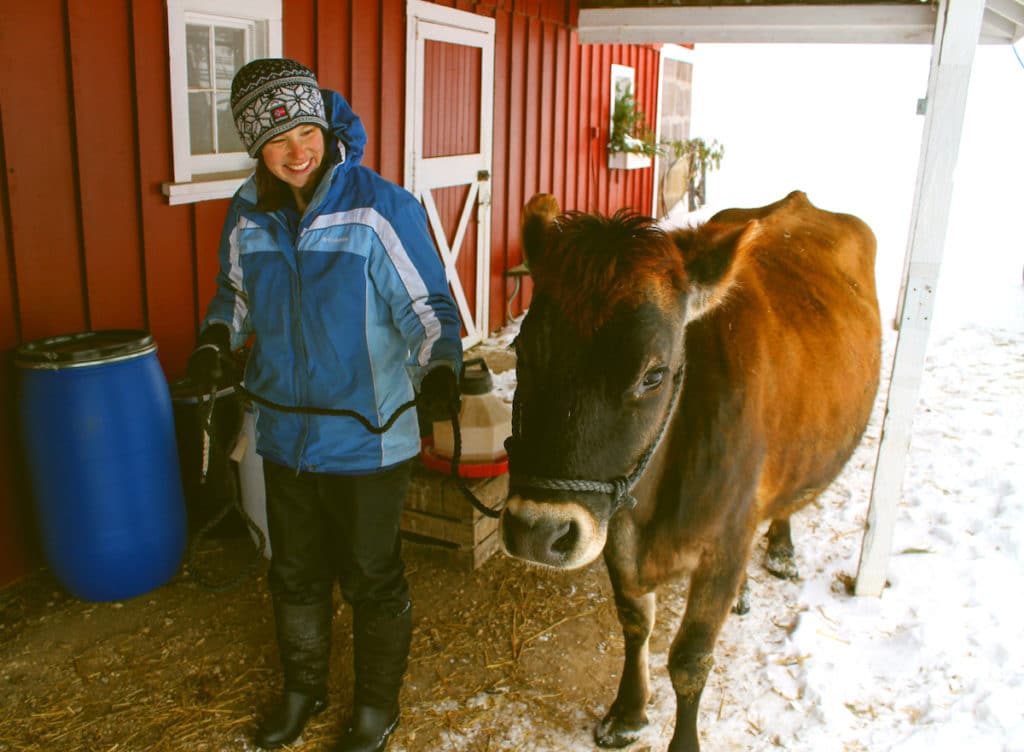
To make a long story short, we read up, researched, asked questions, and ultimately brought home Thimble, our Jersey milk cow. She is like a member of our family now and we couldn’t imagine life without her. But what does that all look like in our lives practically?
What Will A Milk Cow Cost Me In Time?
The cost you need to consider above all else in owning a family milk cow is time. Breaking even with the initial and ongoing cost of having a milk cow versus what you get back is very doable, which we’ll explain more below. But your time is your biggest asset.
On average our milk cow takes up about one hour of our time per day. Milking and straining is between 30-60 minutes. We milk once a day by hand, but you can double that for milking twice a day. Other chores – separating mama & calf for calf sharing, filling water, moving fencing, feeding hay – are around 15 minutes per day.

We can’t assign a value for your time, but let’s say it’s $30/hr. At one hour a day for 365 days, that would come out to just shy of $11,000/yr. It would be very difficult to recoup that cost with a milk cow.
If you view your cow as a money maker – especially from a time perspective – you’ll likely be disappointed. We’ve found it most helpful to put it in the category of a hobby or something we GET to do. That mindset frees you up to enjoy the sweet rhythms and relationship you have with your cow plus the bountiful dairy you receive, which makes it all totally worth it!
What Is The Cost of A Family Milk Cow?
A family milk cow can range between $800-$3,000. Why the wide range? There are many factors that affect the cost you will pay for your milk cow. Asking questions and finding out the history of the cow you are considering is REALLY important to, 1) make sure she’s the right fit for your family, farm, and situation, and 2) make sure you’re paying a fair price.
Here’s a breakdown of what you need to consider:
Breed
Gurnsey, Holstein, Jersey, Brown Swiss, Ayrshire, and Dexter are common milk cow breeds. The price will not always vary significantly between breeds, but it will likely have some impact. It’s more important you get the right breed for your specific scale, terrain, and needs.
Are They Lactating?
Milk cows are clearly more valuable if they are lactating. A heifer who has not been bred or calved will sell for less. If lactating, it’s important to ask when they calved to know where they’re at in their lactation cycle. If it was within a few months, they should still have a strong supply.

Where They Are Coming From
The environment a cow was raised in matters. Cows coming from a commercial dairy might not transition well to a small family farm or homestead. Proven family milk cows from other small farms are your best bet, but you can also expect to pay a premium.
Traits & Temperament
Cows have personality! Sassy, calm, kicky, bossy, motherly and anywhere in between. Certain breeds are known for different traits, but it can really vary cow by cow. Any cow you show love and respect to can soften over time. But they definitely come with their own unique personality. If you find one that is calm and well mannered, go for it!
Training
Milk cows don’t just start out being perfectly accustomed to stand in one place for long stretches of time and let a human milk them. This takes training, investment, and patience. Some cows are trained to be halter led. Others won’t budge. Some are used to being machine milked vs. by hand. You’ll want to consider their prior training both in terms of the cost you pay upfront and the cost you might pay in time to train her yourself.
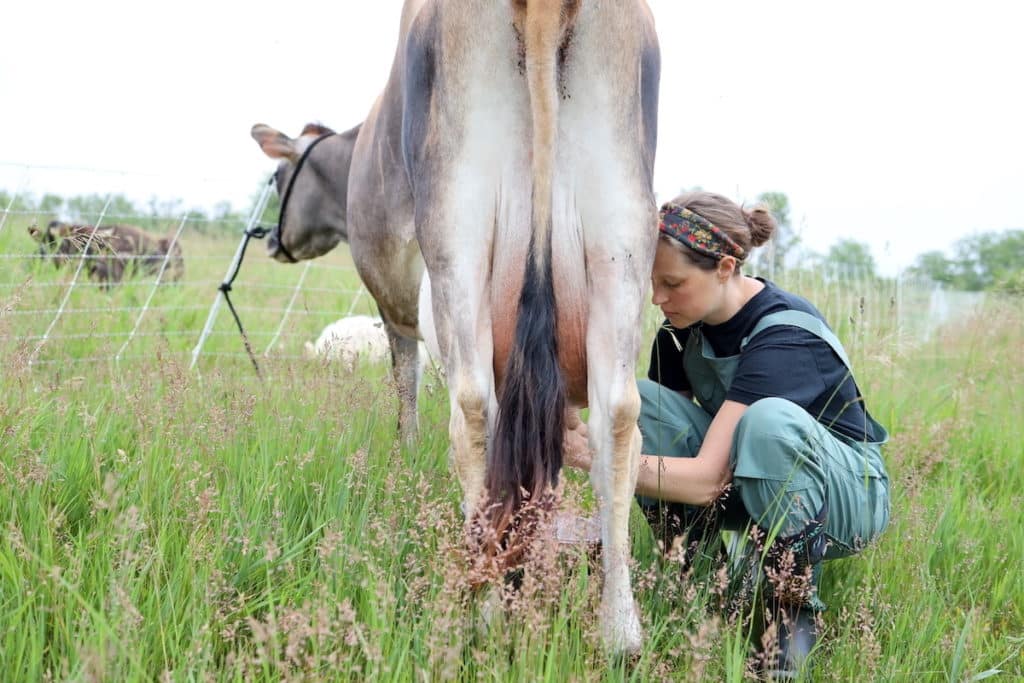
Production
Two cows of the same breed and size does not mean they will produce the same amount of milk. Learn about their history of production and how much milk you can expect to get per milking. Generally, the more the merrier. However, our milk cow is not a huge producer and that is fine for us. We are a small scale homestead just looking to provide enough for our family.
Age
Commercial dairies will typically retire a cow after 6-7 years. A family milk cow will generally lactate for 11-12 years, or even longer. You’ll want to consider how many years of lactation they have left in them and make sure the price you’re paying is worth it.
Basic Supplies & Equipment
There are hundreds of ways to raise a milk cow. It will depend on your setup, your cow, and your lifestyle. In our post, Owning a Family Milk Cow Basics, we share what our setup and milking routine looks like, along with the basic equipment we use.
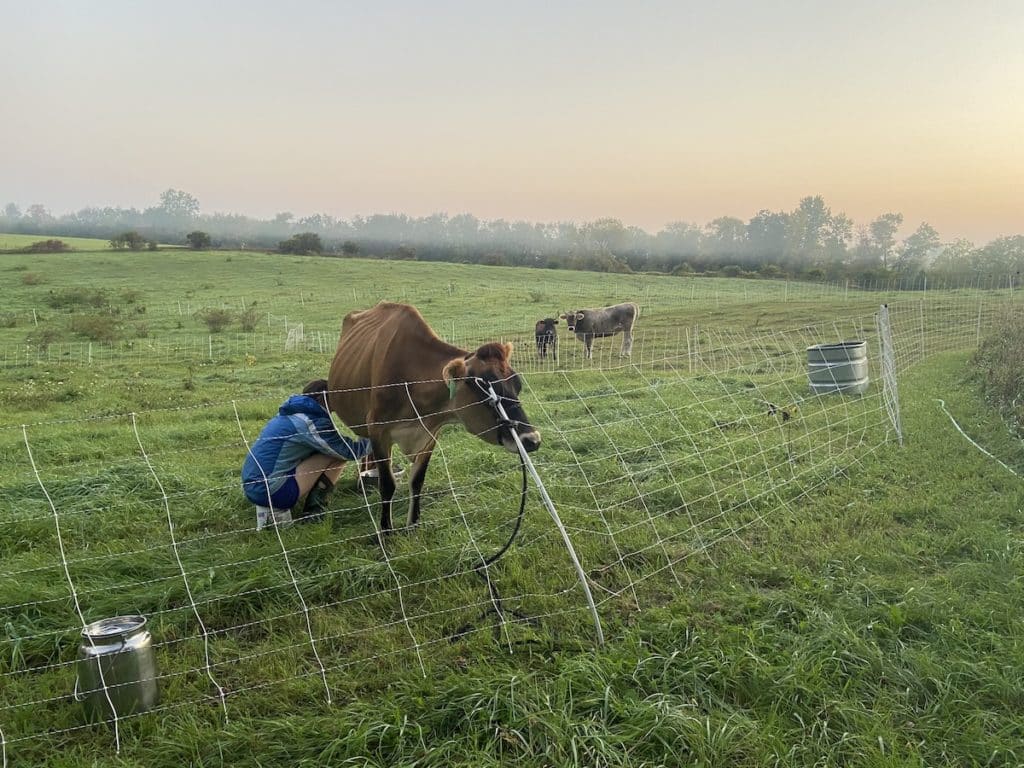
You can certainly spend a decent chunk of change on milking equipment and necessities for your cow. But you don’t NEED to! Our goal was to keep things simple and low cost. We don’t have a stanchion, milk machine, professional straining equipment, or anything like that. We milk by hand, tie her up to a fence post, strain with equipment you likely already have on hand, and try to spend as little as possible.
Here is a breakdown of the bare bones equipment we purchased to get going with our milk cow, which has served us well for almost 3 years now:
| Item | Cost | Notes |
|---|---|---|
| Milk Bucket | $45 | 9 Quart |
| Milk Pail w/ Lid | $75 | 10 Quart |
| Halter | $15 | |
| (12) 1/2 Gallon Jars | $25 | |
| Water Trough | $120 | 44 Gallon galvanized |
| Iodine | – | we use soap and warm water |
| Strainer | – | something you likely have on hand |
| 8 Cup Pyrex Measuring Cup | – | or any bowl or container you have on hand |
| Used Hand Towels | – | something you likely have on hand |
| Salt Block | $10/ea. | 2/yr |
| Mineral Block | $15/ea. | 4/yr |
| Basic Costs to Get Going | $305 |
This chart does assume you already have fencing in place. But if you are interested in an affordable fencing solution, our post, Rotational Grazing on a Small Scale, talks about our low-cost fencing setup. We purchased used, electro-netting fencing which has worked great.
What Are Feed Costs For A Family Milk Cow?
Our Jersey milk cow is on an all-grass diet and we have seen her thrive on that. We don’t feed her any grains. Grains are often supplemented to increase production. Since production is not a major concern for us, we are able to let her graze on our pasture about half the year to avoid additional feed costs.
Over winter, you will need to provide hay for feed. We’ve found a milk cow and her calf to consume about 1.5 small square bales of hay per day. We pay $5 per small square bale. How long your cows are on hay will vary by location and climate. Figuring our cows are on hay for around 6 months, we’d expect to pay $1300-$1400 in hay for the year.
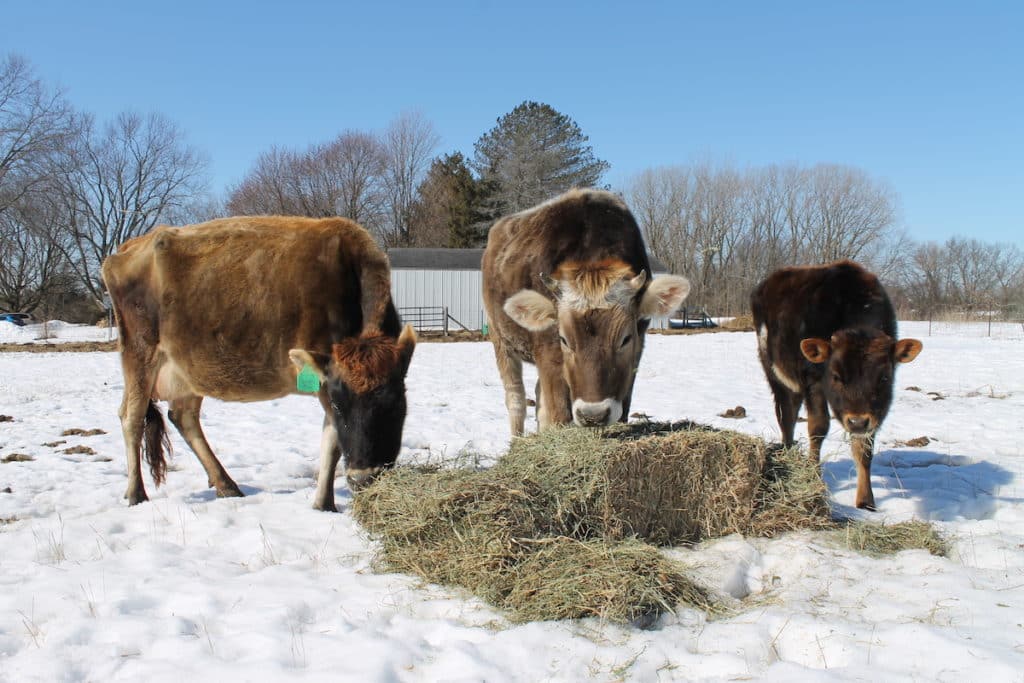
What Do I Get From My Family Milk Cow?
If you’re considering a family milk cow, no doubt you and your family are planning to consume a fair amount of the dairy yourselves. The best way to understand the monetary value of what you consume is to look at prices of comparable products you would otherwise be purchasing.
We drink the milk, but also turn it into other value-added dairy products like ice cream, yogurt, cheese, butter, and cream. The table below shows our best guess as to the dairy we consume each year as a family and what we would spend if we purchased it from other local farms or sources.
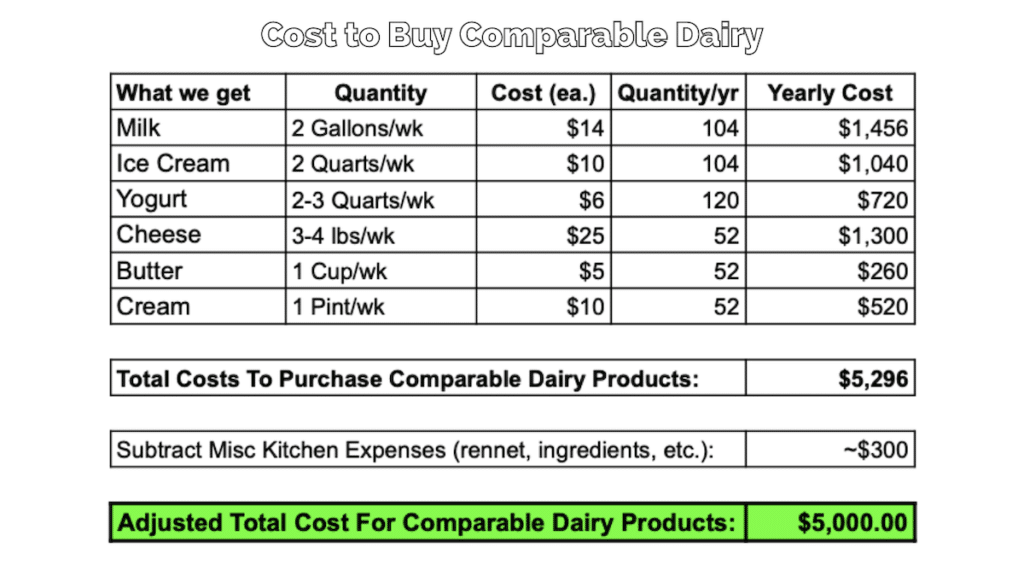
It’s worth noting here that we don’t consider this chart to be an apples-to-apples comparison. We’ve rarely found products comparable to the quality we are able to produce at home. The grocery store simply has no match for the freshly churned butter from our cream rich, pastured Jersey milk. Our Raw Milk Vanilla Ice Cream recipe contains so much nutrition and goodness which just doesn’t have a competitor out there we could even purchase. Those things you can’t put a price to!
Selling And Bartering Extra Milk
One cow will likely produce more than any one family can keep up with. So, in addition to considering what you will save by consuming the dairy you produce, you need to consider what you could gain from the extra milk.
Production will vary based on the cow and what you feed them. We get 1.5-2 gallons of milk per day from our cow. Figuring about 12 gallons per week, we consume about half leaving 6 gallons available to exchange with others. The going rate for raw milk in our area is $12. So, we have the potential for earning around $4,000 in extra milk from our cow.
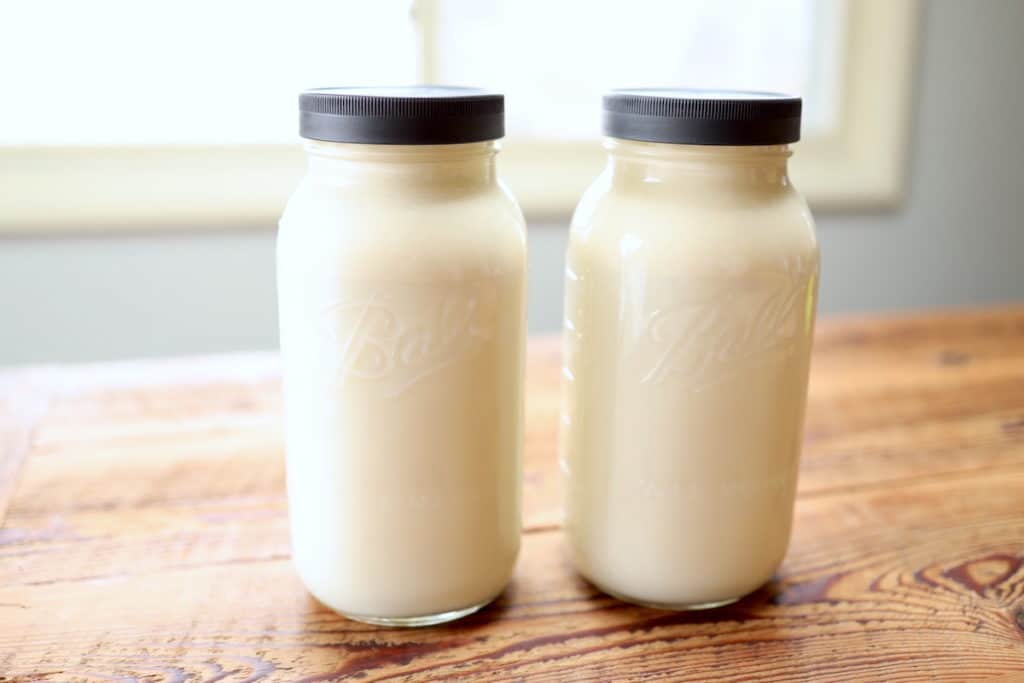
You will want to research what the laws are in your state around selling raw milk. Some states allow it, some are very restrictive. If your state has requirements that restrict you from selling raw milk, we’ve found bartering to be a great alternative to selling.
We have bartered for hay, meat, a family photo shoot, work done on our house or car, and other goods or services. Once people find out you have a milk cow, they are often happy to trade whatever goods or services they have available for a share of that fresh, creamy goodness!
What You Can’t Put A Cost To
We’ve often likened getting our milk cow to be nearly in same category as adding another member to our family. It’s a commitment. It requires investment. There is hard work and even sacrifices involved.
For instance, last year we missed a family vacation because of our milk cow. Our calf weaned the month leading up to the trip, we didn’t have anyone to milk her, and so we stayed home. Not ideal, but that’s how the timing worked out.
BUT, we have found so many joys and benefits of having a family milk cow that you simply can’t assign a value to. Here’s a taste:
1. We eat A LOT of Dairy! I am still blown away by how much food we are able to produce from a family milk cow and the percentage of our diet that dairy is able to make up. If I had to guess, close to 1/3 of our diet is dairy related. I can’t think of any other food source that is able to provide so diversely and abundantly.
2. Don’t underestimate the pure enjoyment of milking. We find it to be a therapeutic and meditative process. Being that close to and intimate with an animal can do marvelous things for your soul. We love the daily rhythms of milking and then producing all sorts of delicious dairy creations in the kitchen.
3. It’s an educational experience for all. Our 3-year-old recently said, “Mommy, do Grammy and Papa have a milk cow?” He was totally serious. He simply couldn’t understand where the milk in their fridge came from if they didn’t have a milk cow. It teaches all of us where our food comes from on the most real of levels.
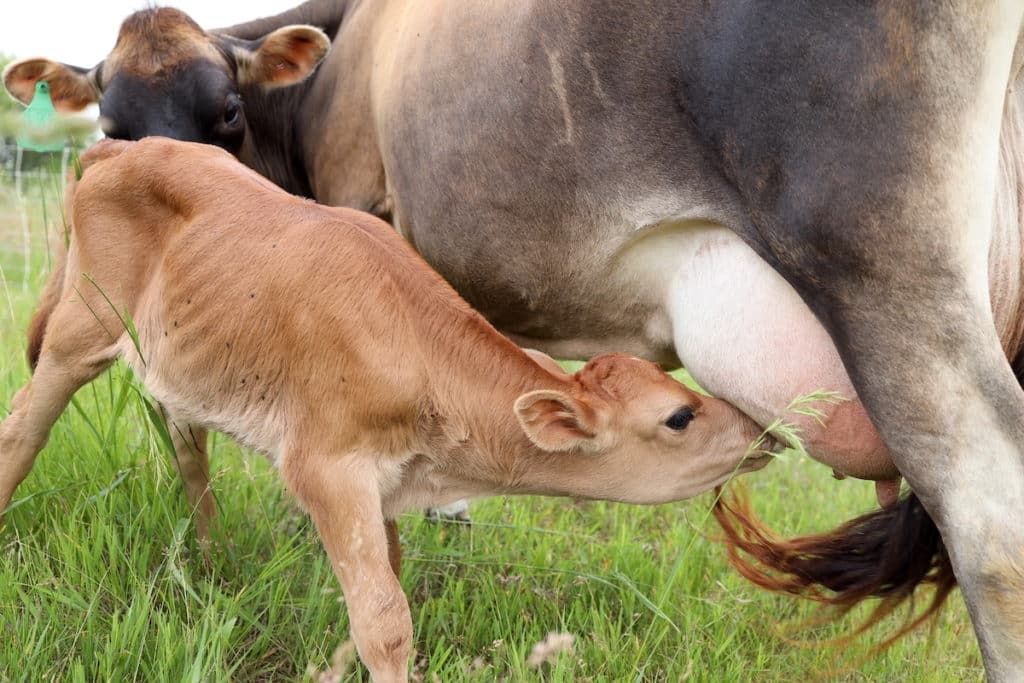
Is Having A Family Milk Cow Worth It?
In our opinion, the answer is a clear, “Yes!”
You can break down the dollars and cents of it until the cows come home! But in the end, having a family milk cow is really a decision of your time, your values, and what’s best for your family.
For us, it has been totally worth it and we would highly recommend having a family milk cow to anyone who has weighed out the costs and commitment.
We’d love to hear from you! Where are you at in considering a family milk cow? What’s been your experience purchasing and raising a dairy cow?
Some of the above links are affiliate links. This means we earn a small commission on qualifying purchases at no cost to you. We are so appreciative of your support!
Read more about owning a family milk cow:
- Owning A Family Milk Cow Basics
- How Many Cows Per Acre On A Small Farm
- What To Know About Rotational Grazing On A Small Scale
- Simple Cow Milking Process For Beginners
Pin it for later!

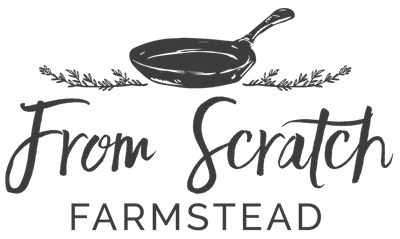
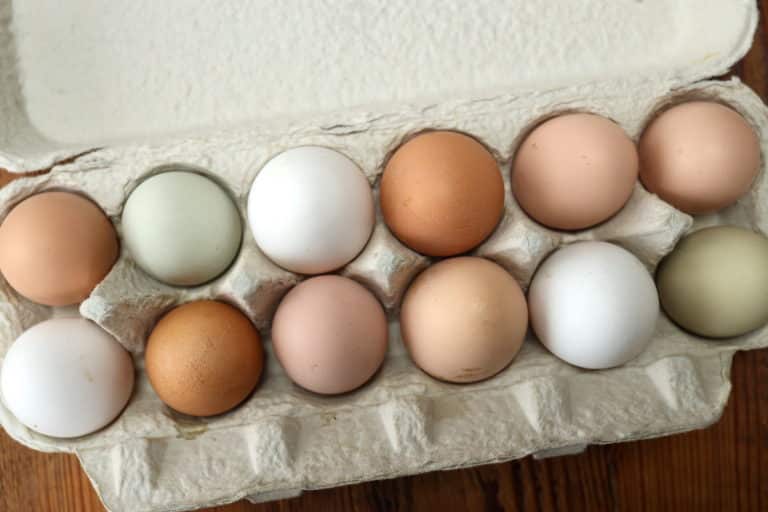


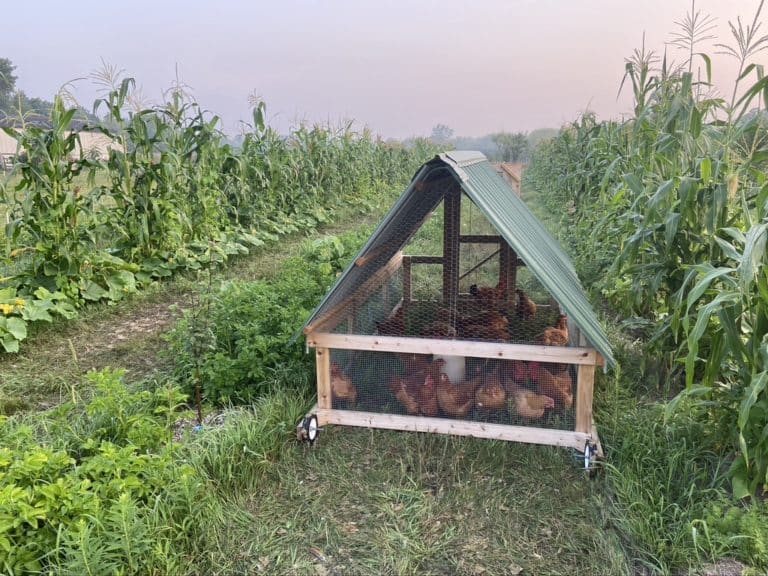


Thanks so much for this! It was SO helpful! We’re SERIOUSLY considering a dairy cow but just need to find the right timing. :). Do your cows stay in a lean-to in the winter? If so, how much did that cost? Thanks again!
Hi! So glad this was helpful for you! We have a barn stall that our cows can go in in the winter. However, we’d love to build something like this to protect them more outside on nasty days, even if it’s just out of scrap wood/pallets. I think you’d be able to get away with building something for pretty minimal costs if you are resourceful!